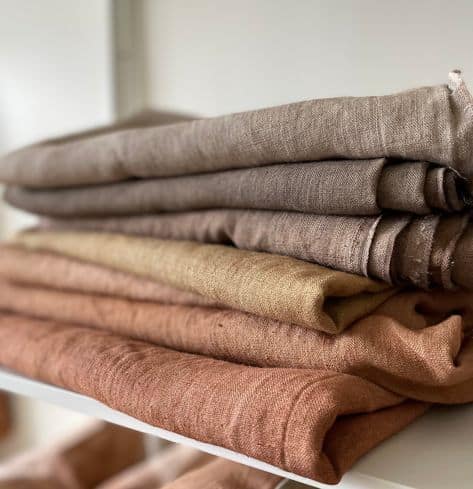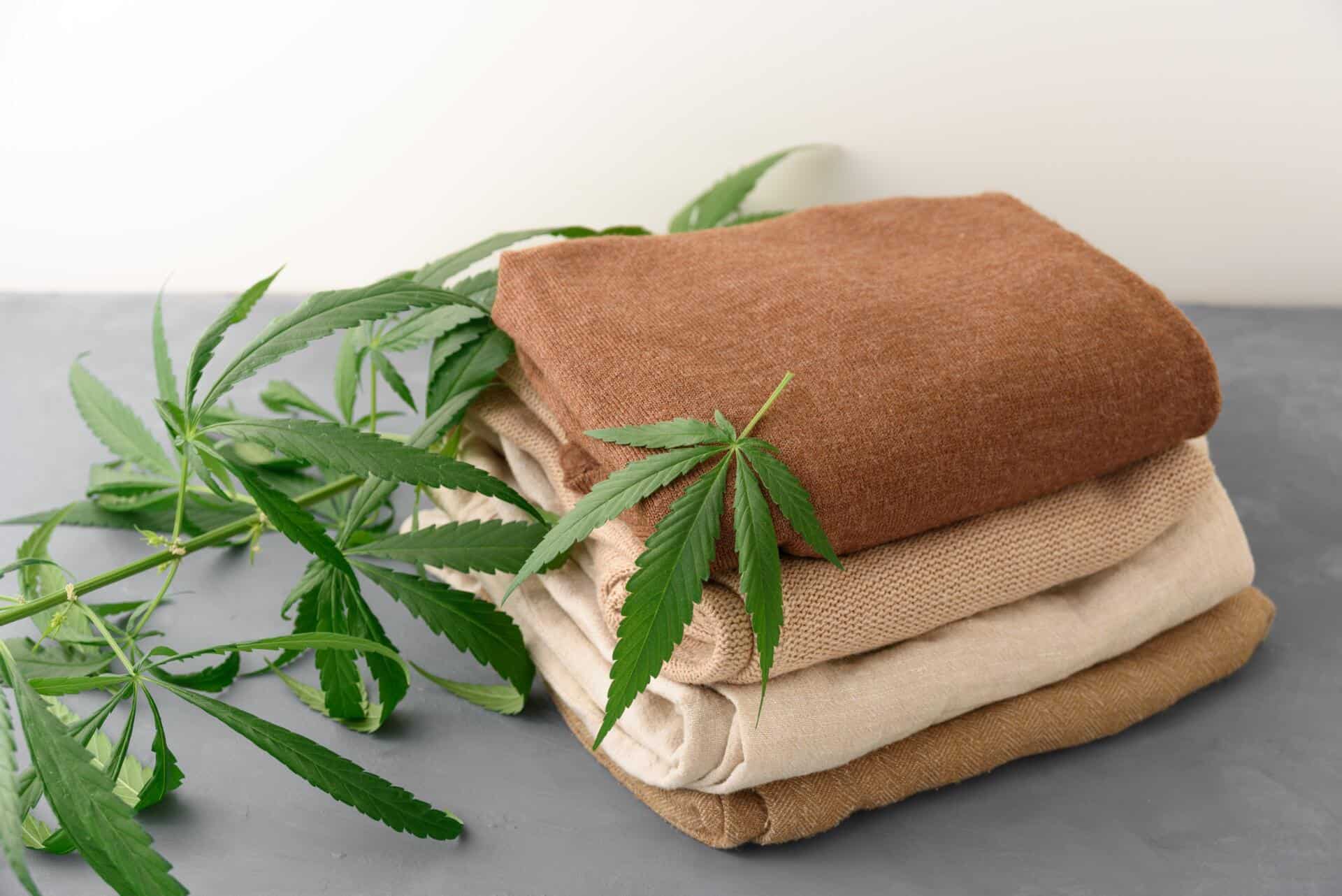Why is hemp clothing so sustainable?
Learn more about hemp, its production, environmental advantages and how it can make the fashion industry more sustainable
It is not news that the fashion industry is facing a pressing need for sustainability. In this scenario, hemp clothing is for sure a game-changer.
As consumers, are becoming more and more conscious of their choices, designers and brands MUST seek for alternatives. Hemp, is for sure a game-changer, a versatile, resource-preserving plant that has long been known, but that is now making a remarkable comeback in the fashion world.
What is it and for how long has hemp been used in fashion?
Hemp belongs to the category of bast fibers, which refers to a group of plant-based fibers obtained from the stems of various plants, including flax (used to produce linen), jute, and stinging nettle. It has a rich history in textiles, dating back thousands of years. Historically, it was a primary source of fabric for various civilizations, including the Chinese, Egyptians, and Europeans; rumour has it that the word “canvas” is derived from “cannabis”. However, its popularity declined over time due to political and social stigmas, particularly related to its association with marijuana. Hemp and marijuana belong to the same Cannabis sativa species, but they are distinct in their chemical composition, with hemp containing negligible levels of THC (tetrahydrocannabinol), the psychoactive compound present in marijuana.
How is hemp turned into clothing? It works very much like linen, let’s see the entire process:
Nr. 1
Harvesting
Hemp plants are ready for harvest in about 4 to 5 months after planting. The timing is crucial to ensure the fibers are at their peak quality. Harvesting involves cutting the stalks of the hemp plants close to the ground.
Nr. 2
Retting
After harvesting, the hemp stalks undergo a process called retting. Retting is the natural decomposition of the pectin, which binds the fibers to the woody core of the plant. This can be done through two main methods. “Dew Retting”: The hemp stalks are spread on the field and left to be exposed to dew, rain, and sunlight. This process takes several weeks and helps break down the pectin, allowing the fibers to be separated from the woody core. Or “Water Retting”: Alternatively, the stalks can be submerged in water, either in ponds or running water like rivers, for a few days or weeks. Bacteria and microorganisms in the water break down the pectin, loosening the fibers.
Nr. 3
Separation of Fibers
After retting, the hemp stalks are dried to remove excess moisture. The dried stalks are then mechanically beaten or crushed to separate the fibers from the woody core. This process is known as decortication.
Nr. 4
Scutching
Scutching is the process of removing the remaining woody shives from the hemp fibers. It involves beating the fibers further to free them from the non-fibrous materials.
Nr. 5
Hackling
The fibers are then hackled, which involves combing them through fine-toothed combs to remove any remaining impurities and to align the fibers in a parallel fashion.
Nr. 6
Spinning
Once the fibers are clean and aligned, they can be spun into yarn using traditional spinning techniques or modern machinery.
Nr. 7
Weaving/Knitting
The hemp yarn is woven or knitted into fabric. Different weaving patterns can create various types of hemp fabric, ranging from lightweight and breathable to denser and more durable.
Nr. 8
Dyeing and Finishing
The hemp fabric may undergo dyeing to achieve the desired colors or patterns. After dyeing, the fabric is finished, which involves processes like washing, softening, and possibly adding other finishes for specific characteristics.
Nr. 9
Manufacturing
Finally, the hemp fabric is cut and sewn into various clothing items, such as shirts, pants, dresses, and more.

The different phases of the hemp fabric production can be carried out using organic, chemical-free mechanical processes. However, nowadays, numerous companies opt for chemical methods, which are faster and cheaper but place a heavier burden on the environment.
When hemp fabric is labeled as “hemp viscose,” it often indicates that it has undergone this intensive chemical process, similar to regular viscose, involving harmful toxic chemicals.

Let’s see all the amazing features that have enabled hemp to make a comeback in the fashion industry
Nr. 1
It’s carbon negative
Hemp cultivation absorbs a substantial amount of carbon dioxide from the atmosphere, making it a carbon-negative crop.
Nr. 2
It demands little land usage
Hemp is a high-yield crop, producing more fibers per acre than cotton. This makes it a more sustainable choice, requiring less land for cultivation.
Nr. 3
It is soil-friendly
While cotton depletes the soil, hemp plants actually enrich it (it is said to return 60-70% of the nutrients it takes from the soil). Additionally, hemp has the remarkable ability to purify the soil by removing pollutants, like cadmium, through a process known as phytoremediation.
Nr. 4
It does not require chemical fertilizers and pesticides
Hemp is naturally pest-resistant, eliminating the need for pesticides and herbicides during cultivation, unlike cotton, which heavily relies on chemical inputs.
Nr. 5
It needs less water
Hemp requires significantly less water than cotton during its growth period. Cotton is infamous for its high water usage, contributing to water scarcity in many regions worldwide.
Nr. 6
It is durable
Hemp fibers are known for their incredible strength, making hemp textiles highly durable and long-lasting. Clothes made from hemp can withstand frequent washing and wear without losing their shape or color.
Nr. 7
It gets better and better with time
Hemp is known for wearing in rather than wearing out, it is famous for becoming even softer with each wash and wear.
Nr. 8
It boasts breathability and comfort
Hemp fabric has excellent breathability, allowing air circulation and moisture absorption. This makes it a comfortable choice, especially for warm climates or active wear.
Nr. 9
It has antibacterial properties
Hemp fibers contain natural antibacterial agents that can help resist the growth of bacteria, keeping garments fresh and odor-free for extended periods.
Nr. 10
It offers UV protection
Hemp offers excellent sun protection, being the most resilient natural fiber against harsh UV rays.
Nr. 11
It is biodegradable
Hemp is a biodegradable material, meaning that discarded hemp textiles will naturally decompose without leaving harmful residues or polluting the environment.* *It depends on many factors, discover more on our blog “BIODEGRADABILITY IN FASHION: ALL YOU NEED TO KNOW”


About Manteco, Italian premium textiles and circularity since 1943
After decades in the fashion world, in 2018, we have created the Manteco Academy project, through which we give webinars, in-person lessons and workshops on eco-design, circular economy and sustainability to numerous fashion schools, technical universities and brands worldwide. Thanks to this educative commitment and our heritage, we are often invited as guest speaker at events, panels, podcasts and conferences about sustainable fashion and circular economy.

